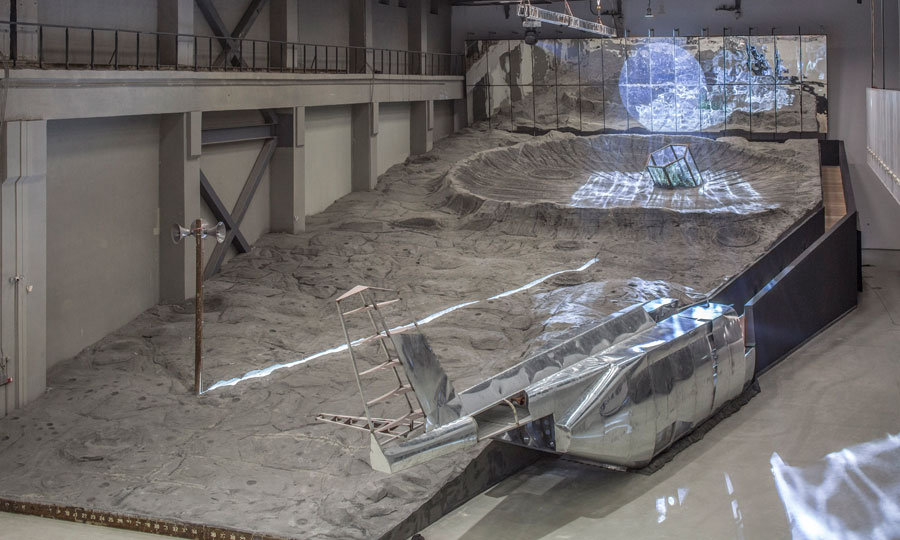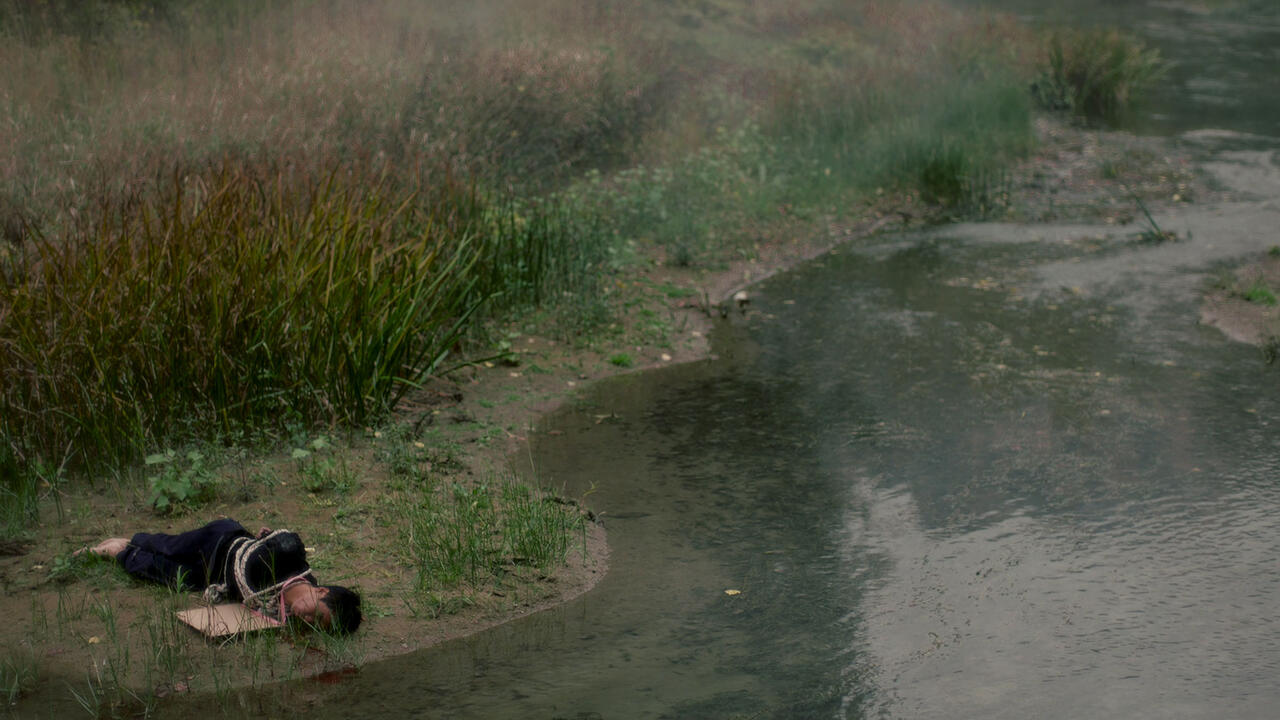11th Shanghai Biennale
Power Station of Art, Shanghai, China
Power Station of Art, Shanghai, China

Read the Chinese transaltion of this article here: editorial-taroccobiennale-frieze184-cn.pdf
Halfway through my solitary first visit to the 11th Shanghai Biennale, I was reminded of Marguerite Duras’s script for Hiroshima Mon Amour (1959). In it, she refers to the ‘particular halo’ that colours every gesture in Hiroshima, giving it a ‘supplementary meaning’ beyond the literal. Curated by Raqs Media Collective and titled ‘Why Not Ask Again: Arguments, Counter-arguments and Stories’, the biennale is animated by a similarly precise choreography of displacement, repetition and reconceptualization to that which reigns in Duras’s film. The show, which takes place at the cavernous Power Station of Art – Shanghai’s only publicly funded contemporary art museum – carefully avoids the ‘literal’: meaning here is not singular but multiple, fragmented and thick.

The three members of Raqs – Jeebesh Bagchi, Monica Narula and Shuddhabrata Sengupta – have worked with a curatorial collegiate composed of Sabih Ahmed, Chen Yun, Liu Tian and Tess Maunder, as well as with a group of young independent curators – Srajana Kaikini Ivan Isaev, Mouna Mekouar, Ugochukwu-Smooth C. Nzewi, Didem Yazıcı – for the ‘Infra-curatorial’ projects. These are intimate ‘shows within the show’ that, while moving at their own individual paces, are also expertly folded into the overarching narratives and strategies of the wider biennale. Likewise, throughout the exhibition, individual works carry traces of other conversations, events and objects. Viewers are asked to contemplate these echoes in the various structuring sections of the biennale – the ‘Orbits’, ‘Terminals’ and ‘Infra-curatorial Platform’ – but following your own sensory logic can also be rewarding. During my second visit, I stayed with Lee Mingwei’s suspenseful performance Our Labyrinth (2015–ongoing) before charging into the nearby, bewildering Disorientation Station (2016) by Ivana Franke, a cluster of circular rooms filled with white LED lights, revolving floors and mirrors aimed at rupturing sensorial context.

Contesting purely theoretical formulas, the biennale includes many works that express opposition to war, persecution and oppression in ways poignantly devoid of didacticism. These include Taus Makhacheva’s bold and probing video Endeavour (2010), the mixed-media paintings on paper ‘Known Unknown; Gaza Series’ (2014) by Farzana Ahmed Urmi, and the haunting ‘The King Series’ (1975–77) by Rabin Mondal. In Untitled Images (2014), Khaled Barakeh meticulously, almost surgically, excises from photographic images the bodies of war victims carried in the arms of survivors, the ghostly silhouette a reminder of the brutal dialectic between private loss and historical erasure. In the film installation Wandering Lake (2009–ongoing), Patty Chang explores the intersections between bodies and unstable geographies as a form of political commentary. Mother/Land (2015), a video installation by Sofya Staune about migration and exile, Dewaal (2012–14), a sound wall of protest shouts by Desire Machine Collective, and Tao Hui’s Talk About Body (2013), a quietly terrifying critique of China’s regimes of heteronormativity and Han-majority control of other groups, all seethe with fury and indignation.

Raqs have taken advantage of the harsh industrial interior and exterior spaces of the museum to stage salient juxtapositions through placement and the thoughtful use of light and sound. Parked outside the vast cement facade of the building, the site-specific installation The Sidewinder (2016) by Lantian Xie – an empty black Volkswagen Santana, which plays jazz while a copy of Life lies open on the passenger seat – is ominous and cinematic. By contrast, Maruts – Storm Deities (2016), Vishal K. Dar’s intervention in the brick chimney of the former power station, which consists of a spiraling ascension guided by oscillating beams of light set to varying metronomic meters, feels entirely cosmogonist and transformative.

Weaving moral and ethical concerns together with playfulness and flânerie, this biennale assumes a theatrical function. It also opens up to ordinary lives lived in Shanghai: the off-site project ‘51 Personae’, devised in collaboration with local curator Chen Yun, part ethnography and part community project, may be seen as an attempt at ‘urban cultivation’. Three participants per week, over the biennale’s 17-week duration, will tell stories of their experiences of Shanghai to live audiences who must seek them out in unusual sites. These intimate encounters are magnified in the echo chamber of China’s omnivorous social media platform, WeChat. Republic Of Dance (2016) is equally intriguing in its attempt to combine the cosmopolitan conventions of dance theatre with city life. Created by dancers and choreographers Xiao Ke and Zhao Zihan as part of the performance strand, the work alludes to the contemporary Chinese culture of dancing in large groups in public spaces – often derided yet utterly resilient. It serves to remind us of the intricate choreographies of daily routine and the intrinsic beauty of bodily movement.
Crucially, Raqs and the other curators have determinedly resisted ethnocentric perspectives, foremost by avoiding what Rey Chow describes as ‘a kind of postmodern self-writing’ and the ‘primitivism’ that appeals to specific Orientalist discourses about Asia. Yet, they have also remained sceptical of the liberating possibilities that diasporic mobility, globalization and transnationalism supposedly present.
Main image: MouSen+MSG, The Great Chain of Being — Planet Trilogy, 2016, videos, sound, objects and bees. Courtesy: Power Station of Art, Shanghai























